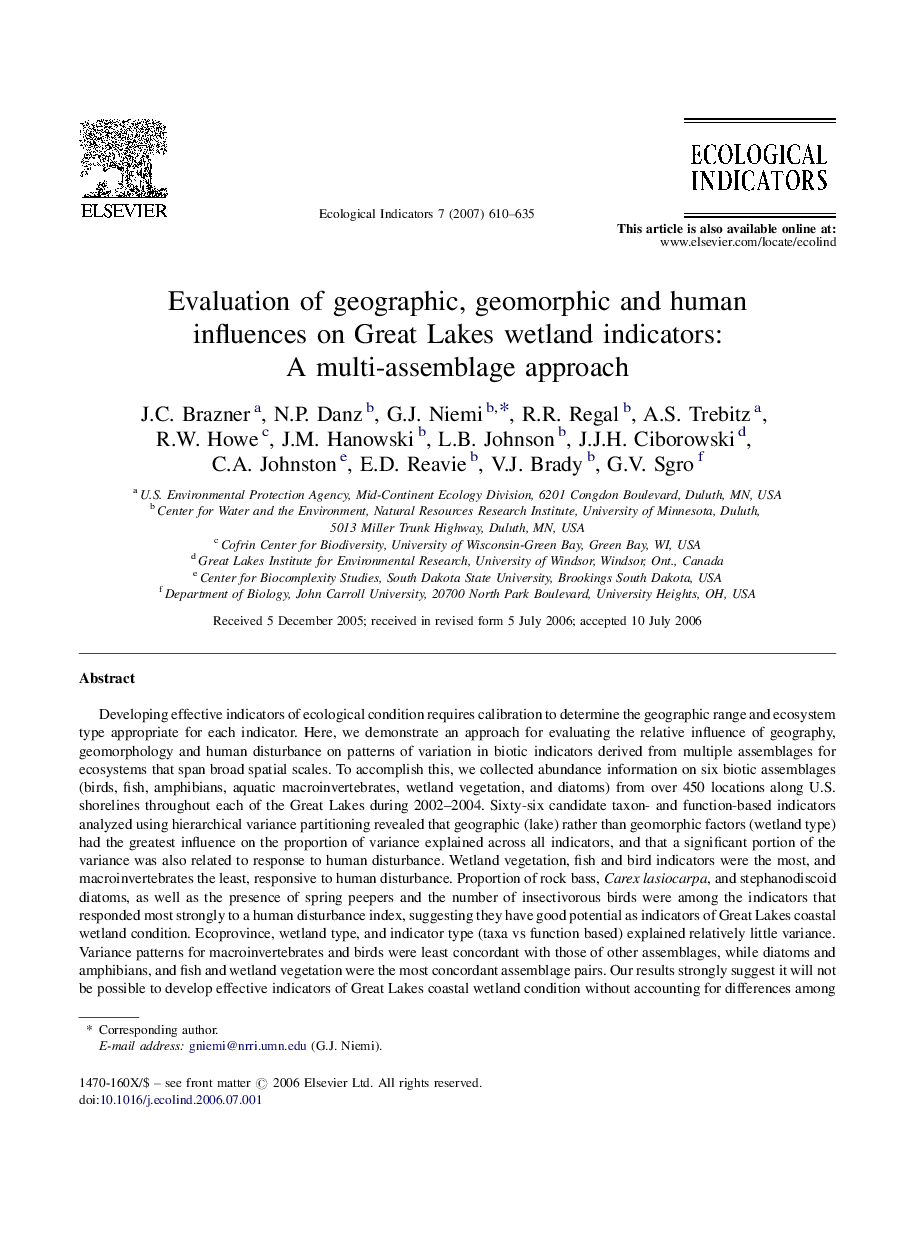| Article ID | Journal | Published Year | Pages | File Type |
|---|---|---|---|---|
| 4374674 | Ecological Indicators | 2007 | 26 Pages |
Developing effective indicators of ecological condition requires calibration to determine the geographic range and ecosystem type appropriate for each indicator. Here, we demonstrate an approach for evaluating the relative influence of geography, geomorphology and human disturbance on patterns of variation in biotic indicators derived from multiple assemblages for ecosystems that span broad spatial scales. To accomplish this, we collected abundance information on six biotic assemblages (birds, fish, amphibians, aquatic macroinvertebrates, wetland vegetation, and diatoms) from over 450 locations along U.S. shorelines throughout each of the Great Lakes during 2002–2004. Sixty-six candidate taxon- and function-based indicators analyzed using hierarchical variance partitioning revealed that geographic (lake) rather than geomorphic factors (wetland type) had the greatest influence on the proportion of variance explained across all indicators, and that a significant portion of the variance was also related to response to human disturbance. Wetland vegetation, fish and bird indicators were the most, and macroinvertebrates the least, responsive to human disturbance. Proportion of rock bass, Carex lasiocarpa, and stephanodiscoid diatoms, as well as the presence of spring peepers and the number of insectivorous birds were among the indicators that responded most strongly to a human disturbance index, suggesting they have good potential as indicators of Great Lakes coastal wetland condition. Ecoprovince, wetland type, and indicator type (taxa vs function based) explained relatively little variance. Variance patterns for macroinvertebrates and birds were least concordant with those of other assemblages, while diatoms and amphibians, and fish and wetland vegetation were the most concordant assemblage pairs. Our results strongly suggest it will not be possible to develop effective indicators of Great Lakes coastal wetland condition without accounting for differences among lakes and their important interactions. This is one of the first attempts to show how ecological indicators of human disturbance vary over a broad spatial scale in wetlands.
